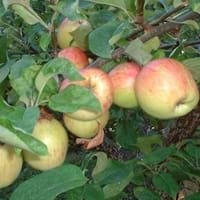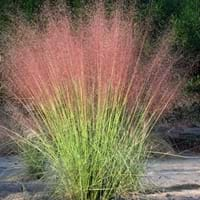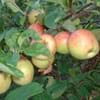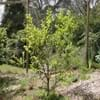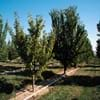Life Span
Perennial
Perennial
Origin
Eastern Europe, Southern Europe, Russia/Siberia, Southern Asia, Western Asia
Northeastern United States, Southeastern United States, Central United States, South-Central United States, Mexico, Caribbean
Types
Not avaialable
Lindheimer's muhly
Habitat
Hillside, Mountain Slopes, Temperate Regions
Prairies, Roadsides, Warmer regions
USDA Hardiness Zone
2-8
4-10
Sunset Zone
Not Available
4, 5, 6, 7, 8, 9, 10, 11, 12, 13, 14, 15, 16, 17, 18, 19, 20, 21, 22, 23, 24
Habit
Spreading
Clump-Forming
Flower Color
White, Light Pink
Pink
Flower Color Modifier
Bicolor
Bicolor
Fruit Color
Red, Light Yellow
Non Fruiting Plant
Leaf Color in Spring
Green
Green, Dark Green
Leaf Color in Summer
Green
Light Green
Leaf Color in Fall
Green, Light Yellow, Brown
Green, Dark Green, Brown
Leaf Color in Winter
Light Green
Tan, Brown
Leaf Shape
Oblong
Grass like
Plant Season
Spring, Fall
Spring, Summer, Fall, Winter
Sunlight
Full Sun, Partial Sun, Partial shade
Full Sun, Partial Sun
Growth Rate
Medium
Medium
Type of Soil
Loam, Sand
Clay, Loam, Sand
The pH of Soil
Acidic, Neutral
Acidic, Neutral, Alkaline
Soil Drainage
Well drained
Well drained
Bloom Time
Early Spring, Spring
Late Summer, Early Fall, Fall
Where to Plant?
Ground
Ground
How to Plant?
Grafting, Seedlings, Transplanting
Divison, Seedlings
Plant Maintenance
Medium
Low
Watering Requirements
Medium
Water frequently while growing, Water more frequently during periods of extreme drought
In Summer
Lots of watering
Lots of watering
In Spring
Moderate
Moderate
In Winter
Average Water
Average Water
Soil pH
Acidic, Neutral
Acidic, Neutral, Alkaline
Soil Type
Loam, Sand
Clay, Loam, Sand
Soil Drainage Capacity
Well drained
Well drained
Sun Exposure
Full Sun, Partial Sun, Partial shade
Full Sun, Partial Sun
Pruning
Remove damaged leaves, Remove dead branches, Remove dead leaves
Prune when plant is dormant, Remove dead or diseased plant parts
Fertilizers
All-Purpose Liquid Fertilizer
No fertilizers needed
Pests and Diseases
Black rot, Leaf spot, Scab
Aphids, Ladybug
Plant Tolerance
Drought
Drought
Flower Petal Number
Single
Single
Foliage Texture
Medium
Fine
Foliage Sheen
Matte
Matte
Attracts
Birds, Not Available
Ladybug beetles
Allergy
Mouth itching, Throat itching
Not Available
Aesthetic Uses
Not Used For Aesthetic Purpose
Showy Purposes
Beauty Benefits
Not Available
Not Available
Environmental Uses
Air purification
Air purification, Shelter for wildlife
Medicinal Uses
Cancer, constipation, Diabetes, Diarrhea, Dysentry, Fever, Heart problems, Tooth ache
No Medicinal Use
Part of Plant Used
Fruits
Whole plant
Other Uses
Used As Food, Wood is used for making furniture
Used as Ornamental plant
Used As Indoor Plant
No
No
Used As Outdoor Plant
Yes
Yes
Garden Design
Edible, Fruit / Fruit Tree
Dried Flower / Everlasting, Container, Edging, Feature Plant, Mixed Border, Rock Garden / Wall
Botanical Name
Malus domestica Wolf River
MUHLENBERGIA capillaris
Common Name
Apple, Cider Apple, Cooking Apple, Wolf River Apple
Pink Muhly Grass
In Hindi
Wolf River Apple
Muhly Grass
In German
Wolf River Apple
hairawn muhly
In French
Wolf River Apple
muhly herbe
In Spanish
Wolf River Apple
muhly Grass
In Greek
Wolf River Apple
Muhly Grass
In Portuguese
Wolf River Apple
muhly grama
In Polish
Wolf River Apple
Muhly Trawa
In Latin
Wolf River Apple
Muhly Grass
Phylum
Magnoliophyta
Magnoliophyta
Class
Magnoliopsida
Liliopsida
Clade
Angiosperms, Eudicots, Rosids
Angiosperms, Commelinids, Monocots
Tribe
Not Available
Not Available
Subfamily
Not Available
Not Available
Number of Species
Not Available
Season and Care of Wolf River Apple and Muhly Grass
Season and care of Wolf River Apple and Muhly Grass is important to know. While considering everything about Wolf River Apple and Muhly Grass Care, growing season is an essential factor. Wolf River Apple season is Spring and Fall and Muhly Grass season is Spring and Fall. The type of soil for Wolf River Apple is Loam, Sand and for Muhly Grass is Clay, Loam, Sand while the PH of soil for Wolf River Apple is Acidic, Neutral and for Muhly Grass is Acidic, Neutral, Alkaline.
Wolf River Apple and Muhly Grass Physical Information
Wolf River Apple and Muhly Grass physical information is very important for comparison. Wolf River Apple height is 610.00 cm and width 610.00 cm whereas Muhly Grass height is 60.00 cm and width 30.00 cm. The color specification of Wolf River Apple and Muhly Grass are as follows:
Wolf River Apple flower color: White and Light Pink
Wolf River Apple leaf color: Green
Muhly Grass flower color: Pink
- Muhly Grass leaf color: Green and Dark Green
Care of Wolf River Apple and Muhly Grass
Care of Wolf River Apple and Muhly Grass include pruning, fertilizers, watering etc. Wolf River Apple pruning is done Remove damaged leaves, Remove dead branches and Remove dead leaves and Muhly Grass pruning is done Prune when plant is dormant and Remove dead or diseased plant parts. In summer Wolf River Apple needs Lots of watering and in winter, it needs Average Water. Whereas, in summer Muhly Grass needs Lots of watering and in winter, it needs Average Water.
